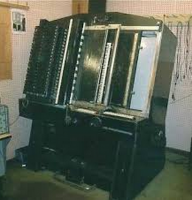








The ANS synthesizer is a photoelectronic musical instrument created by Russian engineer Evgeny Murzin from 1937 to 1957. The technological basis of his invention was the method of graphical sound recording used in cinematography (developed in Russia concurrently with USA), which made it possible to obtain a visible image of a sound wave, as well as to realize the opposite goal—synthesizing a sound from an artificially drawn sound spectrogram.
In 1938, Yevgeny Murzin invented a design for composers based on synthesizing complex musical sounds from a limited number of pure tones; this proposed system was to perform music without musicians or musical instruments. The technological basis of his invention was the method of photo-optic sound recording used in cinematography, which made it possible to obtain a visible image of a sound wave, as well as to realize the opposite goal—synthesizing a sound from an artificially drawn sound wave.
Despite the apparent simplicity of his idea of reconstructing a sound from its visible image, the technical realization of the ANS as a musical instrument did not occur until twenty years later. Murzin was an engineer who worked in areas unrelated to music, and the development of the ANS synthesizer was a hobby and he had many problems realizing on a practical level. It was not until 1958 that Murzin was able to establish a laboratory and gather a group of engineers and musicians in order to design the ANS.